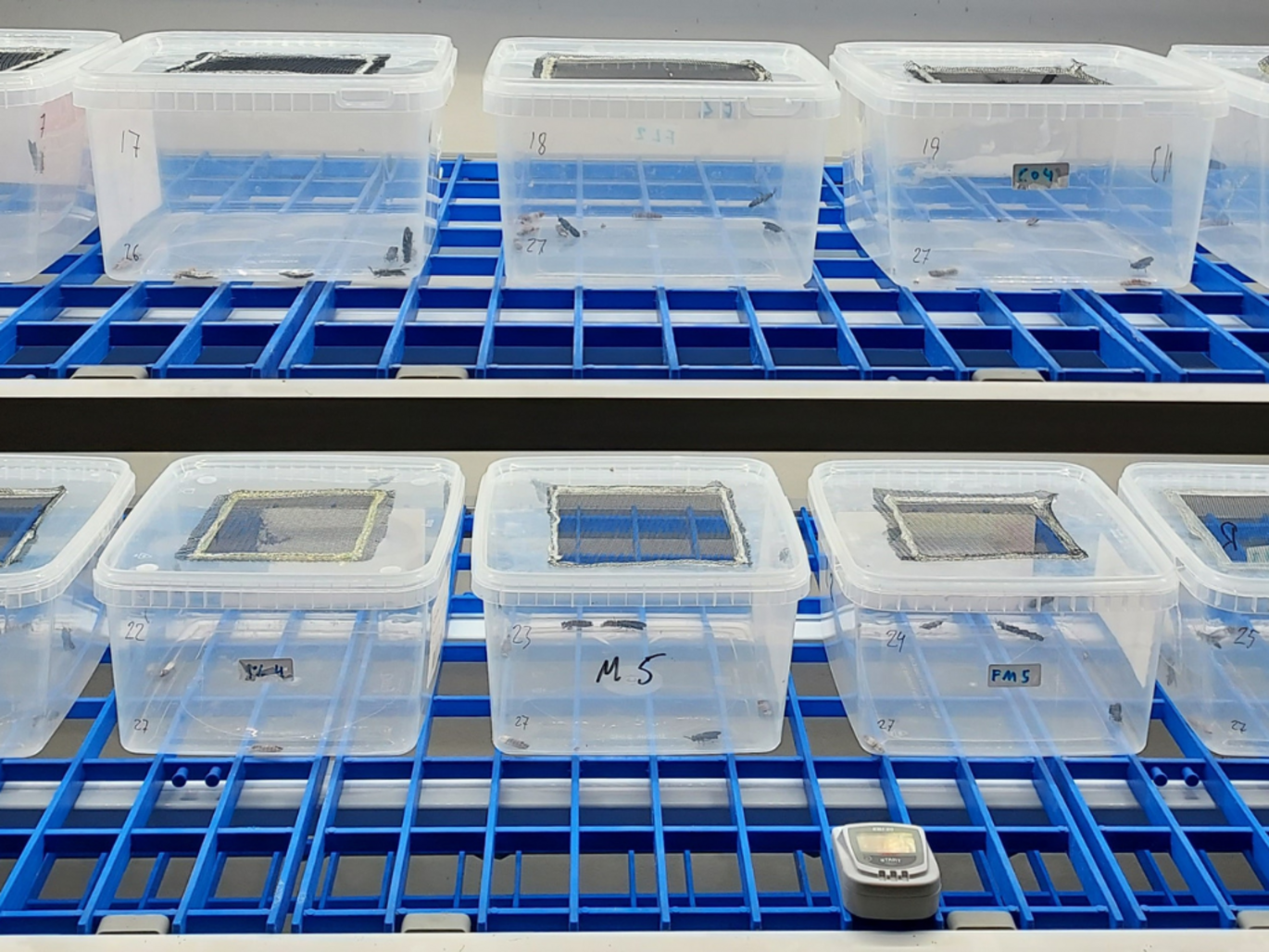Flies and Mating – New insights into Soldier Fly mating habits could lead to more sustainable food production
The production of larvae from soldier flies can be advanced by new knowledge about their mating patterns. This makes it much easier to create breeding programs that specifically target the larvae for the desired traits for sustainable food production.

Imagine a massive dance party where hundreds of soldier flies gather. Males display their best moves to impress the females and entice them to mate.
In nature, soldier flies gather in such groups—a phenomenon called lekking—to perform mating rituals.
Now research shows that such a ritual is not necessary to achieve mating and produce viable offspring.
One male can mate with one or more females
Researchers at the Institute of Animal and Veterinary Sciences have shown that solitary male black soldier flies can successfully mate with one or more females under the right conditions and produce fertilized eggs.
In fact, some males were able to mate with four females without compromising the quality of the eggs.
“This is breaking news,” says Assistant Professor Kim Jensen, one of the key persons behind the new experiments.
“Mating can be controlled for many other insects, but it has been believed until now that this was not possible with soldier flies, which behave differently in nature.”
As a result, other research teams have quickly given up when trying to mate selected individuals.
Polygamy increases males' mating frequency
The researchers also investigated how long it took for mating to occur when one or four females were present.
Not only did mating begin more quickly when four females were present compared to just one, but most males in the experiment also mated multiple times when four females were available.
Just over half of the males mated with all four females within four hours.
Most matings resulted in viable larvae
One thing is that it was successful to get the soldier flies to mate. Even more important is that the females also laid fertilized eggs.
Of 25 males that had access to four females, nearly half managed to impregnate three or four females. They produced an average of 138 larvae each.
Researchers shed light on soldier fly mating
The researchers' investigation literally shed light on how soldier flies mate.
The mating trials took place in transparent plastic boxes under strong light, allowing the researchers to observe the behavior of the soldier flies under optimal mating conditions.
This enabled them to acquire new knowledge that has significant practical implications for the production of soldier fly larvae.
Selection of the most suitable individuals
By selecting soldier flies in this way, it is possible to breed for the best traits.
Inbreeding can be avoided, and there is a much faster path to breeding material that an efficient production system can rely on.
This is a method that has been used for centuries in traditional livestock production but is now proven suitable for the production of soldier fly larvae. Unlike other insects, soldier flies have the advantage of a very short life cycle.
“There are several traits worth breeding for,” says Kim Jensen.
“Primarily the size of the larvae at harvest and how quickly they reach that stage. Another key parameter, also known from traditional livestock production, is feed efficiency—specifically how little feed is needed to produce a certain quantity of larvae.”
Kim Jensen continues, “If we take it a step further, we can start looking at whether some soldier flies are better suited to grow and reproduce on feed of lower nutritional value.”
The purpose of producing insect larvae is precisely that the insects should be able to utilize low-nutrient by-products from feed and food production, thus minimizing waste.
Breeding programs lay the foundation for more efficient production
The idea of establishing breeding programs for the production of soldier flies has previously been mentioned, including an article in videnskab.dk.
Now, for the first time, the researchers can present groundbreaking results on individual mating in the scientific journal Journal of Insects as Food and Feed.
With these results it will now be significantly easier to breed soldier flies and produce their offspring quickly and efficiently.
This way, soldier flies can be bred to have the desired traits for producing cheap and sustainable protein and fat for feed and food products.
| Additional information | |
| We strive to ensure that all our articles live up to the Danish universities' principles for good research communication (scroll down to find the English version on the web-site). Because of this the article will be supplemented with the following information: | |
| External funding | Green Development and Demonstration program (GUDP) (Nr. 34009-21-1933) Independent Research Fund Denmark (DFF-0136-00171B) Villum Foundation (58645) |
| External collaborators | Enorm Biofactory A/S
Center for Quantitative Genetics and Genomics and Department of Biology, Aarhus University Department of Chemistry and Bioscience, Aalborg University |
| External commenting | Peer-reviewed scientific article |
| Conflicts of interest | None |
| Read more | [doi.org/10.1101/2024.09.09.611978] |
| Kim Jensen, kj@anivet.au.dk | |
